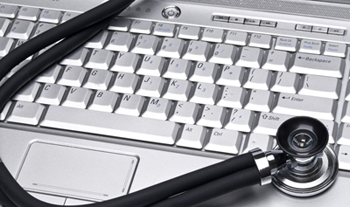 Many health care organizations are striving to implement Electronic Medical Records (EMRs) and demonstrate ‘meaningful use’ of EMRs in 2014 to retain their existing Medicaid and Medicare reimbursement levels. However, it’s wrong to think that EMR will replace medical transcription. In fact, medical transcription improves the use of EMR and also provides many other benefits. Let’s look at the reasons why EMR is not an alternative for transcription services.
Many health care organizations are striving to implement Electronic Medical Records (EMRs) and demonstrate ‘meaningful use’ of EMRs in 2014 to retain their existing Medicaid and Medicare reimbursement levels. However, it’s wrong to think that EMR will replace medical transcription. In fact, medical transcription improves the use of EMR and also provides many other benefits. Let’s look at the reasons why EMR is not an alternative for transcription services.
Time-consuming – Unlike dictation, physicians are required to enter key data directly into the EMR system and makes this clinical documentation very time consuming. Though speech recognition software can be integrated into EMR, you may not get accurate results as the software cannot detect grammatical mistakes or understand where to put punctuation. It also cannot expand acronyms. Medical transcriptionists help physicians save time by providing them with accurate and timely documentation.
Decline in Revenues – As physicians need extra time to complete their clinical documentation, they can see only a fewer number of patients every day. This will impair overall productivity and reduce revenue. With a medical transcription company taking care of their documentation, they can focus better on patient care and enhance productivity and revenue.
Data Entry Costs – Physicians are undoubtedly an expensive resource and it would be a waste if they were made to handle all their documentation too. Letting a medical transcriptionist transcribe the dictation reduces data entry costs.
Limitations to Usability – Clinical narrative or documentation in physician’s own words is the first-person view of a patient’s encounter, which is contextual. Such documentation is complete and meaningful. It is quite difficult to accommodate meaningful conversations with EMR drop-down boxes and templates. On the other hand, in medical transcription, narratives are clearly documented and become more meaningful when integrated with EMR.
Copy and Paste Errors – Physicians usually copy information from one file to another in EMR system to save time. While this is done routinely, it may happen that irrelevant or wrong information is entered. For example, an article in Healthcare IT News tells about how documentation for a patient who had a family history of breast cancer went wrong because the condition was entered as “a history of breast cancer”. That patient had almost lost coverage since her insurer thought she had lied and it took several months to track her records and clear the misunderstandings. As the medical transcriptionist documents directly from the physician’s dictation, the chances of such errors are eliminated.
Less Familiar to Physicians – Physicians are familiar with dictation. However, they need to be thoroughly trained on how doing electronic documentation and learning how EMRs work.
In every sense, medical transcription is essential to ensure the accurate and prompt clinical documentation.
The best approach is to combine both transcription and EMR. With the help of trained and experienced medical transcriptionists, physicians’ dictation can be transcribed into accurate documents. The transcribed content can be then populated into the relevant EMR fields using discrete reportable transcription (DRT). This will relieve physicians of complex data entry tasks and document editing and leave them with more time for their core tasks. Professional medical transcription companies offer feeds to EMR system and have multi-level quality checks in place to ensure the accuracy of the transcripts before delivery.


